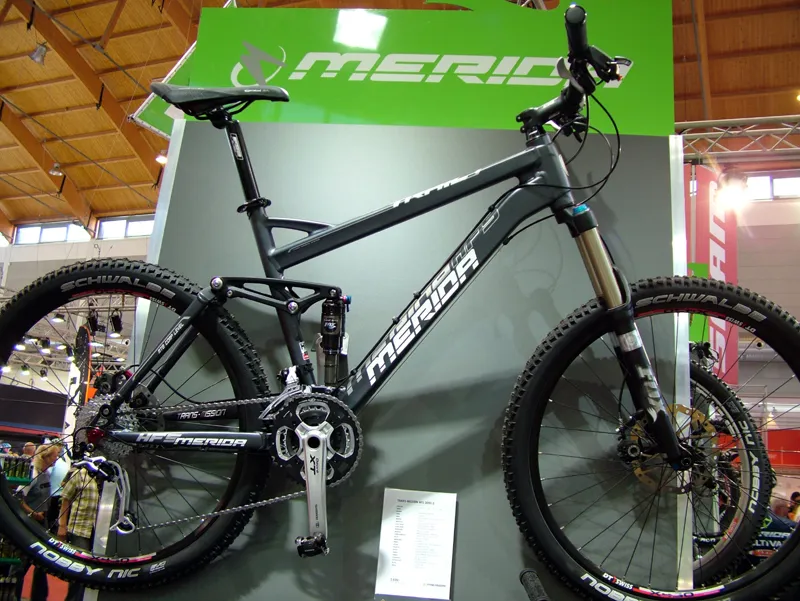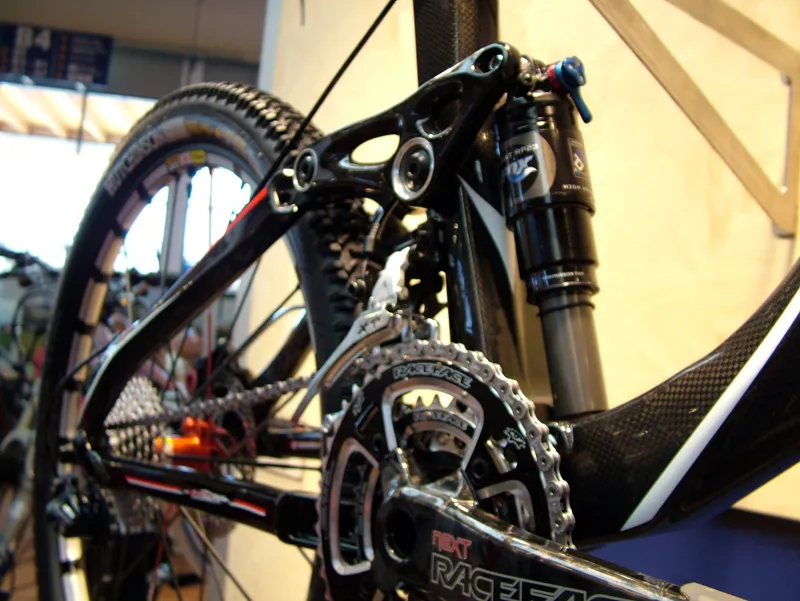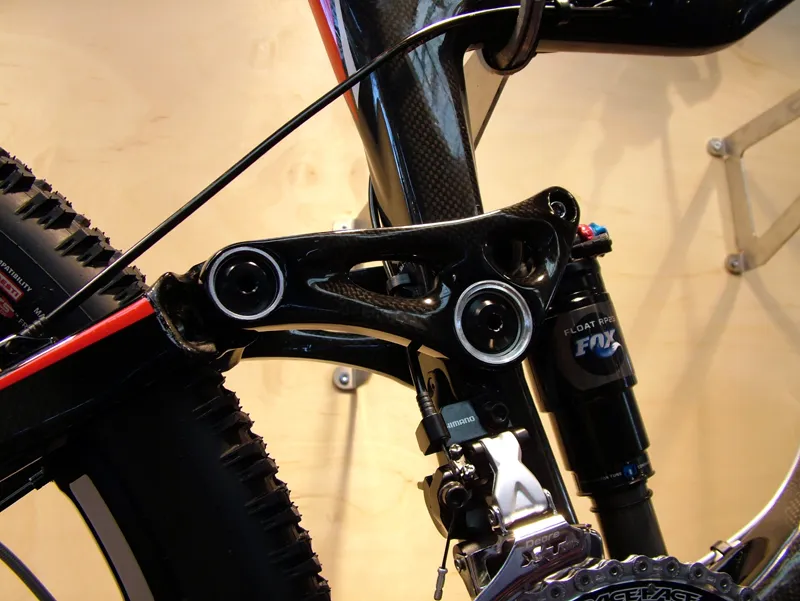Eurobike is a feast of new and improved gear, and What Mountain Bike's editor Matt Skinner roamed the halls in Friedrichshafen, Germany to bring us some timely information on some of the coolest gear for 2009. Here's another report on the dirt side of things.
Merida
Following on the heels of Merida’s Ninety-Six Team D carbon race bike built for the Beijing Olympics – all £7000 of it – Merida have launched the full 96 line that includes more accessible aluminium versions.
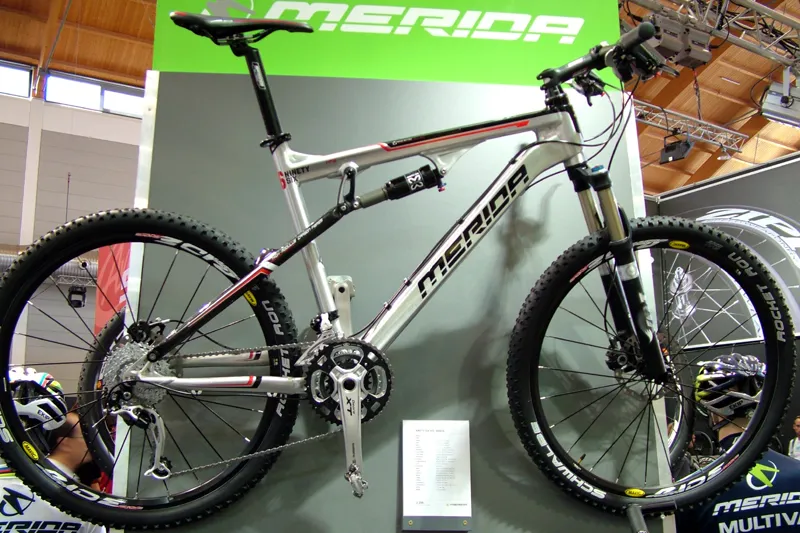
The Ninety-Six HFS 3000-D is one of two aluminium bikes in the line that will be available in the UK. It is also the higher specced with its sibling being the HFS 1000-D. Both feature the same HFS aluminium mainframe with carbon seatstays and a custom X-Fusion RC shock, but the 3000-D gets a Fox F100 RL fork, XT drivetrain and Magura Louise brakes. The 1000-D sees a Manitou R7 Super Air fork, XT/SLX transmission and Shimano M575 hydraulic disc brakes. For the UK, both these bikes will come with riser bars rather than the straight flat bars that will feature on the European versions.
But with economic uncertainty pricing of both these bikes has yet to be confirmed, although we expect them to be around the £2000 mark.
Floating Brake Mount
New for 2009 is the addition on Merida’s higher end One-Five-O and TransMission trail bikes – including the TransMission HFS 3000-D (pictured) – of a floating brake mount to combat the negative effects of braking forces on the bike’s suspension action.
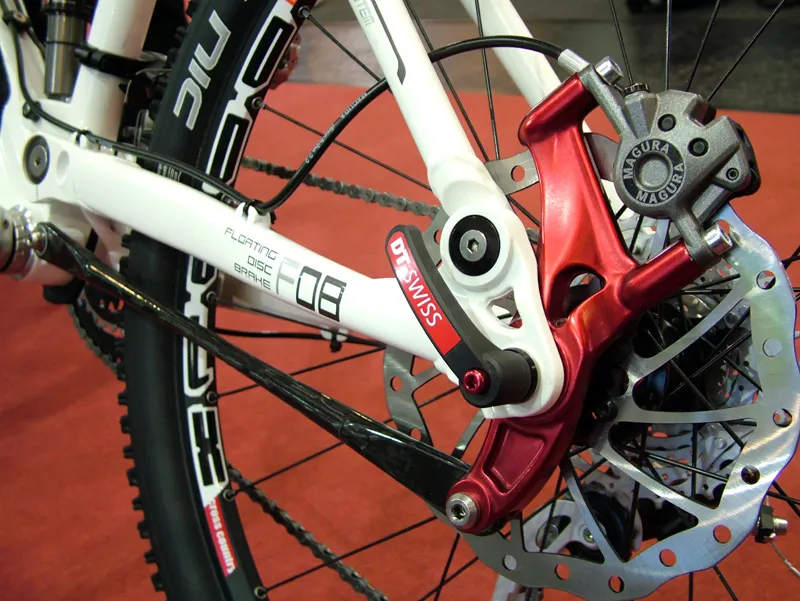
The design is Merida’s own and features a carbon arm running from just behind the bottom bracket to the forged aluminium brake mount assembly. This itself pivots around the rear axle.
It’s not ground breaking or revolutionary, but it should enable Merida’s trail bikes – that use an essentially single pivot suspension design – to perform to their best potential.
Rocky Mountain
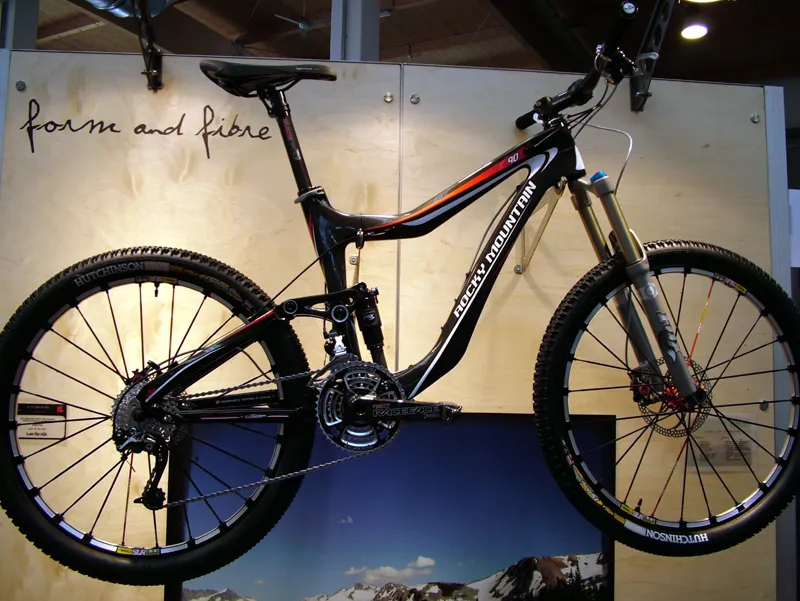
Rocky Mountain has put out to pasture its long running ETSX bikes: in their wake comes the enigmatic Altitude platform.
Designed as a bike a bike for “epic cross country riding”, the Altitude is a 140mm (5.5in) travel bike that has stepped into a very bright scrutinising spotlight right from the off. Not only is the Altitude a maverick rendering of active geometry for greater performance on all trail situations, but its suspension design could ruffle some big feathers.
The bike itself has been created for big days of trail riding in the back country: robust and with a 2.4:1 shock ratio and a slightly rising rate, it’s designed to offer a bottomless suspension feel.
It’ll come in three carbon versions with a frame weight of 5.5lbs, and two aluminium which are 1lb heaver (the Altitude 50 is pictured); on all bikes the attention to detail is impressive: the main frame triangle sees curved down tube that kinks in towards the bottom bracket to allow bottles to be placed in the frame for drink or for lights with a second set of bottle bosses on the underside of the down tube. The kink also gives space for the use of a piggy back shock within the main triangle, and a kinked top tube gives a large standover clearance. On the carbon frames (the Altitude 90 is pictured), the underside of the downtube has been profiled to help deflect rocks from the frame by glancing off the tube rather than smacking straight into it; the rocker is all carbon save for the aluminium bearing inserts; and an integrated seat clamp design is being finalised.
The Altitude is said by Rocky Mountain to be an evolution of the ETS (Energy Transfer System) used on the ETSX bikes and that the new platform operates within the patent. But on face value the bike design is a four bar and the key question is whether or not the rear pivot infringes on Specialized’s fiercely defended Horst Link patent. On the Altitude, the rear pivot is around 5mm above the rear axle line whereas on Specialized’s FSR and FSR licensed designs, the pivot is below or in line with the rear axle. However the past few years has seen the pivot points on many designs – FSR or not – move further towards the rear axle in a gradual trend of refinement. Rocky Mountain obviously feel confident that their design does not infringe on Specialized’s patent, and if this is secure ground it could birth a slew of designs from other manufacturers follow suit.
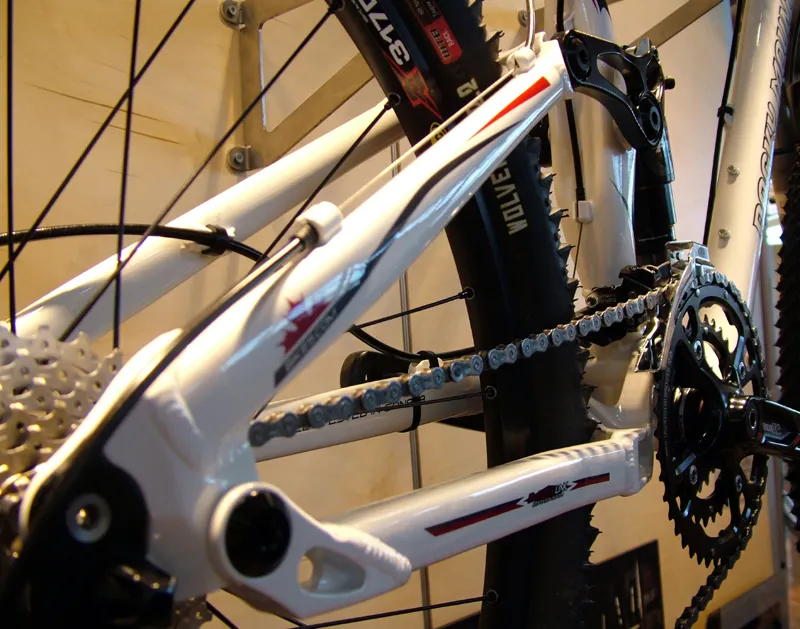
And now for the maverick bit: In order to maximise the bike’s performance both up and down hill, the head tube is an on the money at 69 degrees, however the static seat angle is a super steep 76 degrees. When the rider sits on the bike and the suspension sags into active geometry, the angles will then change and, so goes Rocky’s thinking, the rider will be in the optimum position for climbing. It’s an interesting theory but one we can’t comment on fully until we get a bike in for test and put it through its paces. Look out for the exclusive first test in a forthcoming issue of What Mountain Bike magazine.
Salsa
Following on from Salsa’s recent launch of two new full suspension trail bikes – the Big Mama and the El Kaboing – the Minneapolis based brand unveiled more complete bikes to grow its range still further. The biggest eye catchers was their distinctive adventure tourer atb, the double butted cromoly steel Fargo.
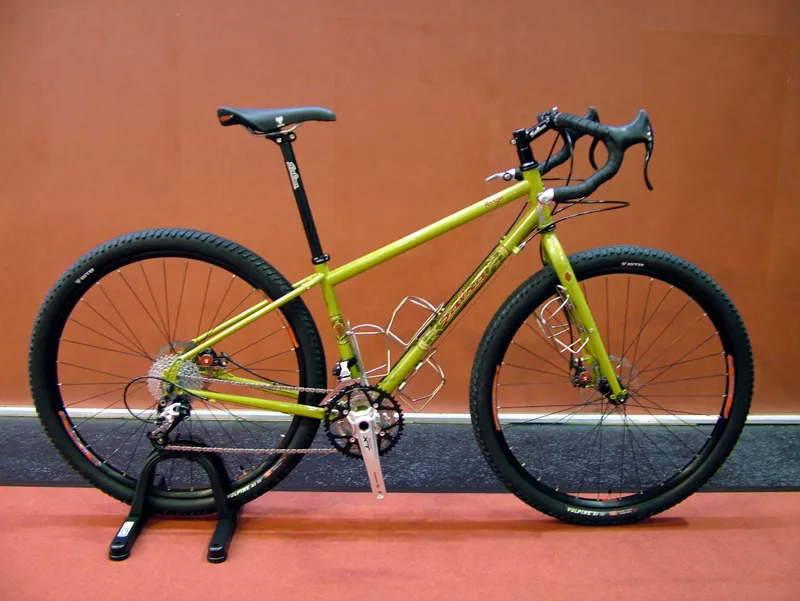
On face value, the Fargo is a mule of a bike combining 29er mountain bike wheels that can fit up to a 2.4in tyre, drop bars, full rack and pannier fixings, cable disc brakes and a host of no less than five bottle cages. But its attention to detailing is first rate: its custom post mount disc mount on the frame is just one example and is one of the few Post Mount frame tabs we’ve yet seen, and is tucked out of the way so as not to interfere with pannier loads.
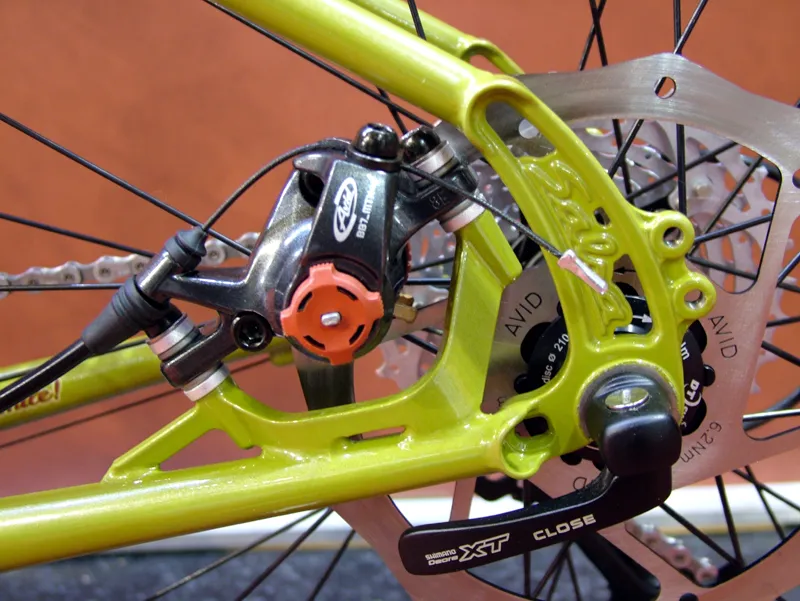
Geometry sits at 70 degree head angle for most sizes, mated with a 73 or 72 degree seat (depending on frame size) that Salsa say is designed for loaded touring on singletrack, gravel, asphalt, and anything in between. A low bottom bracket also aids heavy loaded stability.
